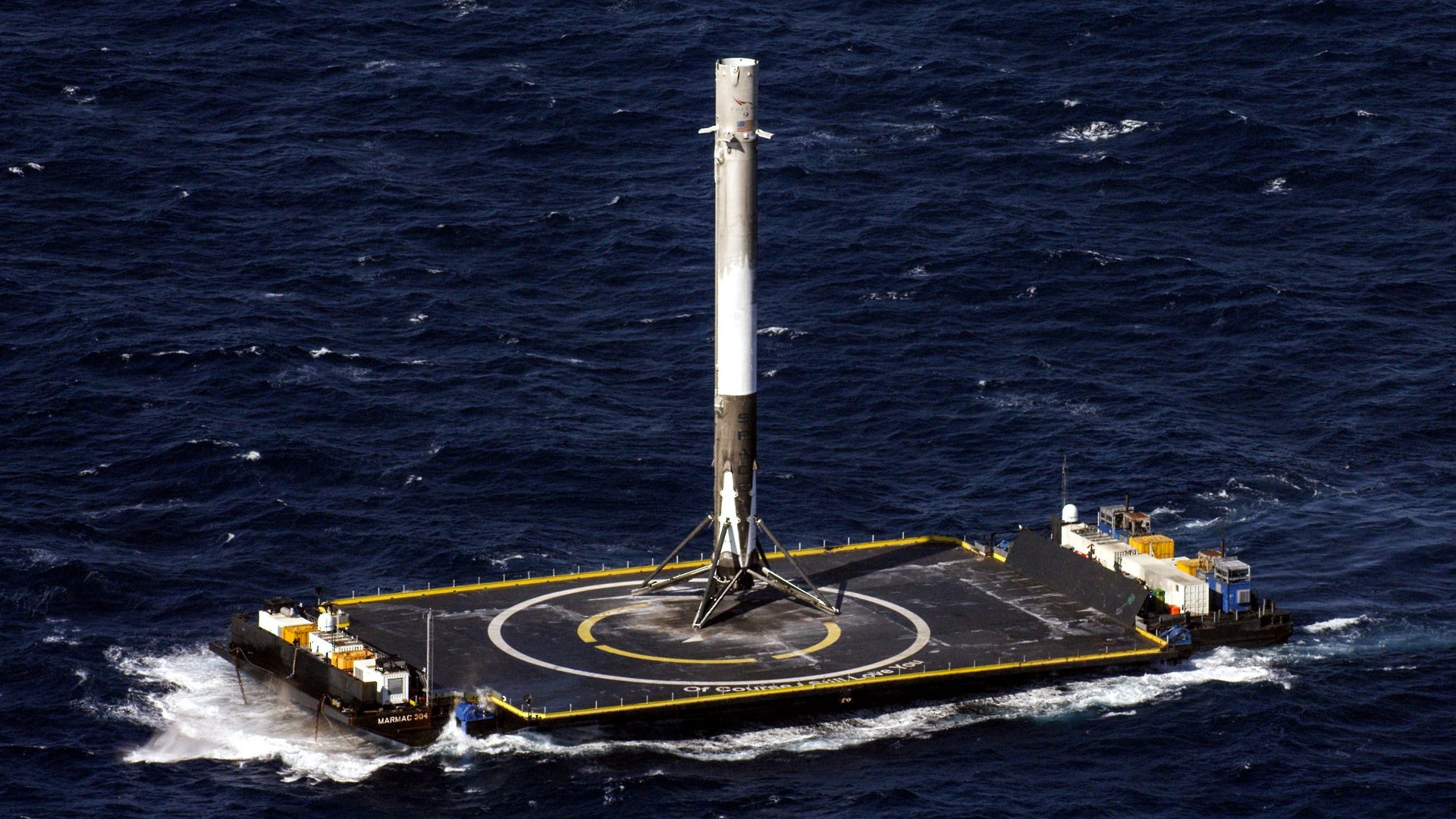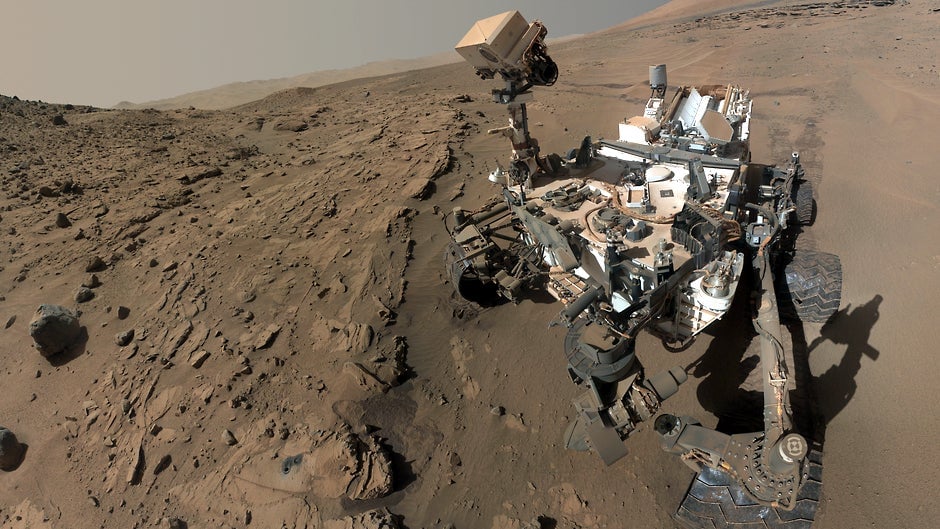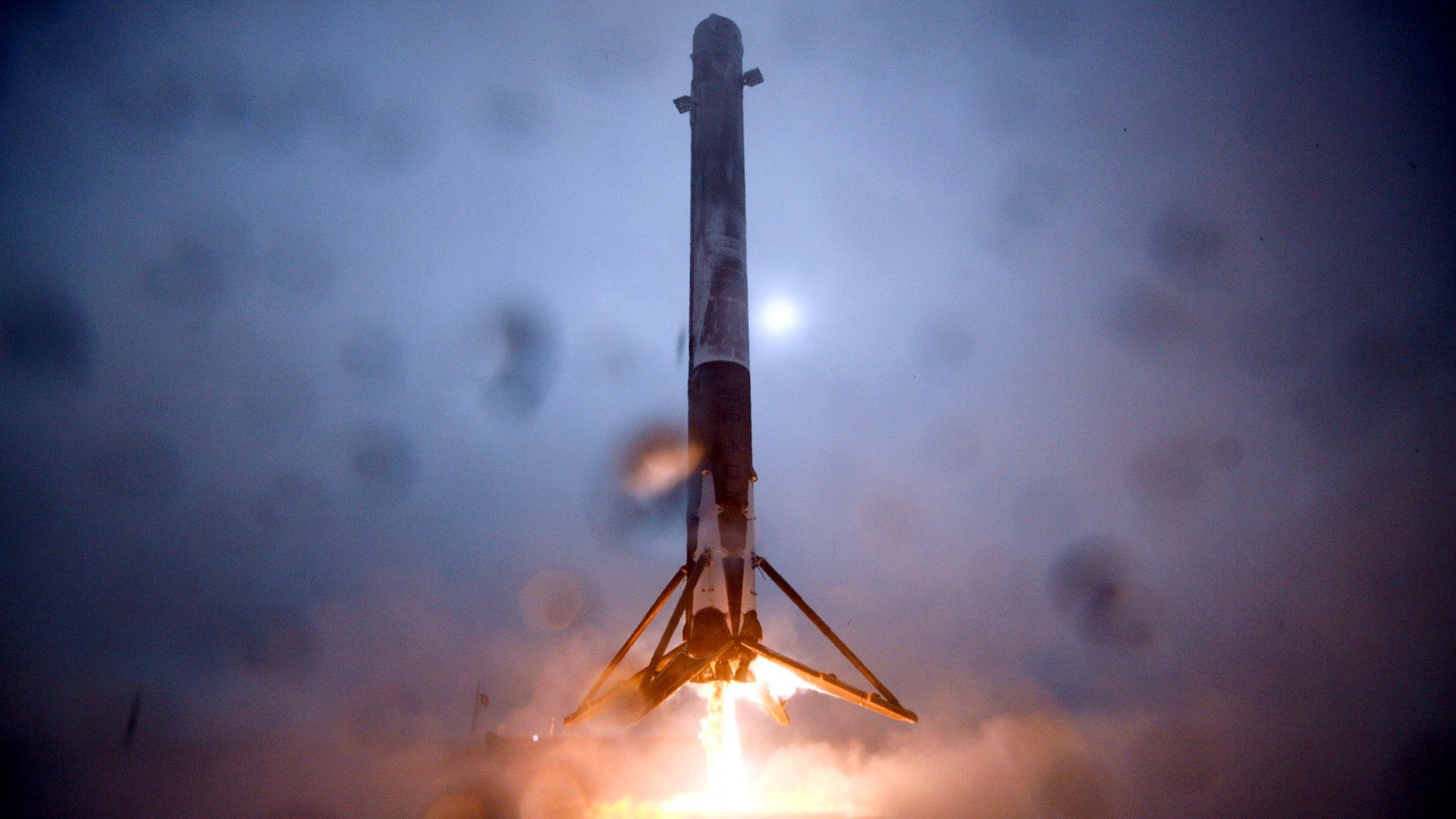The science behind SpaceX’s ambitious plan to land a spacecraft on Mars
Only the space agencies of the Soviet Union, the US and the EU have landed anything on Mars. This week Elon Musk’s rocket company SpaceX said it would put its Dragon spacecraft on the red planet “as soon as 2018″—making it the first private company to go interplanetary.


Only the space agencies of the Soviet Union, the US and the EU have landed anything on Mars. This week Elon Musk’s rocket company SpaceX said it would put its Dragon spacecraft on the red planet “as soon as 2018″—making it the first private company to go interplanetary.
It’s easy to get impatient with crackpot plans to head for the red planet. (I’m guilty of it, too.) But SpaceX is unique in combining its dreams of Mars with well-funded, hard-nosed engineers.
And as it turns out, the company’s long-running quest to build reusable rockets, with the aim of making it cheaper to launch satellites into Earth’s orbit, has had a stealthier goal too. SpaceX’s successful landing of a rocket at sea earlier this month was just one more step towards Musk’s bigger ambition, which is to land on Martian soil in a way that has never done before: Without parachutes, airbags or “skycranes,” but rockets alone.
SpaceX wouldn’t allow any of its employees to speak with me for this story, but I hunted down aerospace engineers who collaborate with the company and could speak about the technology behind its bold claims.
How to land on Mars
You may think that we already land on Mars with rockets. But while it’s true that rockets will carry whatever we send to Mars, landing on the surface once they get there is a different challenge.
It’s a quite different challenge from landing on either Earth or the Moon. Mars’s gravity is more than twice as strong as the Moon’s, so a landing craft needs a lot more help decelerating than the Apollo lunar missions did. But Mars’s atmosphere is more than 100 times thinner than that on Earth. While parachutes can bring a Soyuz space capsule to a relatively gentle landing on the Kazakh steppe, they can’t slow a Mars lander to anywhere near a safe landing speed.
And the nature of the challenge depends a great deal on how big a package you’re sending.
The first rovers NASA sent to the red planet used parachutes to lose as much speed as possible, then fell to the surface ensconced in a protective bubble of airbags. But as the rovers got bigger, airbags became impractical.
So when NASA wanted to drop a 900 kg (1 ton) robot called Curiosity—essentially, a nuclear-powered car with arms—onto the surface of Mars in 2012, it had to get creative. The task fell to a team including Miguel San Martin, a senior engineer at NASA’s Jet Propulsion Lab. They devised a contraption known as the “skycrane” to lower the rover gently to the ground, wheels-first.

Essentially the landing has three stages. (Here’s an animation.) First a heavy heat shield absorbs the atmosphere’s initial impact. Then a parachute slows the craft from supersonic speed to about 220 miles (350 km) per hour. Finally, rockets kick in to slow it further, until it’s hovering 25 feet (8 m) above the ground, at which point it lowers the rover to the surface on a tether.
“People were saying, ‘it’s not going to work,'” San Martin says. But eventually NASA recognized the skycrane as “the right kind of crazy” (paywall).
Losing the ‘chutes
Sending humans to Mars, however, requires a whole new kind of crazy.
“You’re going to have to land a two-story house on Mars, if you’re going to send humans,” says Bobby Braun, a veteran space engineer and former NASA chief technologist, who is currently a professor at the Georgia Institute of Technology, “[and] land it right next to another two-story house that’s been pre-positioned and powered up and has all the fuel and food that humans will need to survive on Mars. Imagine the size of the parachute that one would need for that system. It gets to the point that its preposterous.”
This is where the engineering behind SpaceX’s terrestrial landings comes in. ”The idea, essentially, is to skip the parachute and go right to the rocket,” San Martin says.
The notion was first outlined in a 2012 white paper (pdf) co-authored by Steve Davis, one of SpaceX’s more original thinkers. It noted that the Dragon space capsule, which SpaceX is developing to fly to the International Space Station and back, has powerful built-in engines to allow it to land on Earth (as well as recover safely from a failed launch). It suggested that those same engines, in conjunction with a heat shield, could instead be used to slow the Dragon from a high-speed entry into the Martian atmosphere all the way to a landing on the surface.
Doing that requires mastering a technique called “supersonic retropropulsion.” The Curiosity mission used subsonic retropropulsion: firing its rockets towards the surface of Mars to slow the craft’s descent, after parachutes had already brought it below the speed of sound. The Dragon would have to do the same while traveling much faster than sound.
Under those conditions, the thrust from the engine and the sonic shock wave in front of the craft can interact in surprising ways that scientists don’t fully understand. For example, disrupting the shock wave could make the rocket go faster (rather than slower as you might expect), or cause dangerous turbulence. NASA wasn’t prepared to tolerate that level of uncertainty when designing missions like the Curiosity rover.
But SpaceX demonstrates the technology every time it attempts to land the first stage of one of its Falcon 9 rockets on Earth. When the rocket first begins firing its engines to slow its descent, at an altitude of around 140 km, it is moving at a speed of at least 1,300 meters per second, close to Mach 4. But the real magic happens at about 70 kilometers above the earth.
“When they’re up high at altitude and turn on their engines to do the entry burn, they actually fire their engines in conditions here on the Earth that are almost identical…to the planet Mars” due to the thin atmosphere, Braun says. “SpaceX has actually the first operational system that does supersonic retropropulsion…It’s technology that we will use when we send humans to Mars.”
SpaceX has been sharing the data from those landings with NASA, and Braun has been studying the data to learn how to design a a next-generation Martian lander. One NASA official said in 2014 that sharing the data had saved taxpayers millions of dollars.

Robot, take the wheel
Mastering supersonic retropropulsion isn’t the only challenge SpaceX will face. Landing on Mars will also mean putting an autonomous system in charge. The communications delay between Earth and Mars ranges from four to 24 minutes, making remote control impossible.
Solving that problem isn’t easy. NASA learned this in 1999 when it lost contact with a probe sent to study the Martian south pole. The failure is suspected to have occurred when the rockets intended to slow the probe’s descent cut off early, mistaking vibrations in the landing legs for a successful touchdown.
Figuring out how to prevent failures like that is part of the job description for Brian C. Williams, a former NASA scientist who now runs an MIT laboratory dedicated to remote, autonomous systems.
One of Williams’ PhD students was Lars Blackmore, now the head of SpaceX’s reusable rocket program. Blackmore and another student, Masahiro Ono, developed an innovative way to give an undersea robot the tools needed to navigate, called “risk allocation.”
“The way that you and I deal with uncertainty, we don’t think about probabilities, we have a rule of thumb that says, ‘I’ll have some safety margin, stay three feet from the curb,'” Williams explains. “The algorithms that Lars and Hiro have developed take that intuition, turn that mathematically into a safety margin.”
So when you watch SpaceX’s rocket adjust its fins to direct its descent toward a landing platform, the computer inside is trying to balance the optimal path to the ground with the amount of risk it should take to get there.
The software directing those movements is directly applicable to many different autonomous systems, but particularly to space exploration. Many of Williams’ students, Ono among them, have wound up at NASA’s Jet Propulsion Laboratory, a kind of Top Gun for space geeks. But many others have taken their talent to Musk’s operation.
“I’ve had half a dozen of my students go to JPL, about five of them now are at SpaceX,” Williams says. “The hope that I have for SpaceX is that they’ll be able to take the talent that these engineers have, to deploy the system and explore some of these concepts in new missions.”
In the innovation business
Now that SpaceX has announced its intention of sending the Dragon to Mars, its first obstacle is to finish developing the Falcon Heavy rocket that would carry it there. Tests of the rocket have been repeatedly delayed, but it is expected to fly for the first time in the fall of this year. (When Davis’s white paper first mooted the idea in 2012, the Falcon Heavy was expected to begin testing in 2013.) The Dragon itself can carry more than one metric ton of cargo to Mars, with multiple egress points if any of that cargo includes robots.
Still, to some people—notably the astronomer and space pedant Neil deGrasse Tyson—the idea of SpaceX leading the charge to get to Mars is absurd. Under this view, the private sector doesn’t have the patience for the kind of long-term investment or risk involved in interplanetary exploration. That’s what government agencies like NASA are for. ”The delusion is thinking that SpaceX is going to lead the space frontier. That’s just not going to happen,” Tyson told an interviewer recently.
As an analogy, Tyson invoked Christopher Columbus, funded by the Spanish crown. And it is certainly true that SpaceX was reliant on NASA for early funding and assistance, and now serves as a workhorse for the US space agency. ”They’re bringing cargo back and forth to the space station, as should have been happening decades ago,” Tyson said. “You don’t need NASA to move cargo, you get NASA to do the things that have never been done before.”
But that distinction is swiftly blurring. While NASA is providing technical assistance to SpaceX’s Mars mission, it isn’t providing any funding. In return, it will get important data about technology it cannot deploy itself but will need to fulfill its own Martian aspirations.
Meanwhile, SpaceX is doing more than just moving cargo back and forth. Each time it flies to the International Space Station on a NASA contract, it takes an opportunity to test the next iteration of its new systems. That kind of product development may have advantages over NASA’s approach.
“With supersonic retropropulsion, there was no reason to believe it would not work. But there was no reason to believe that it would work,” San Martin says. “In the culture of NASA, we were going to do a big testing program. Elon Musk just tried it. And if it works, it works.”